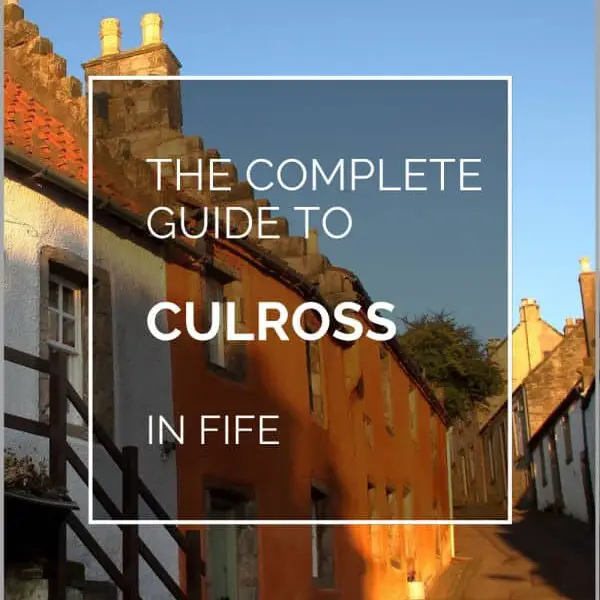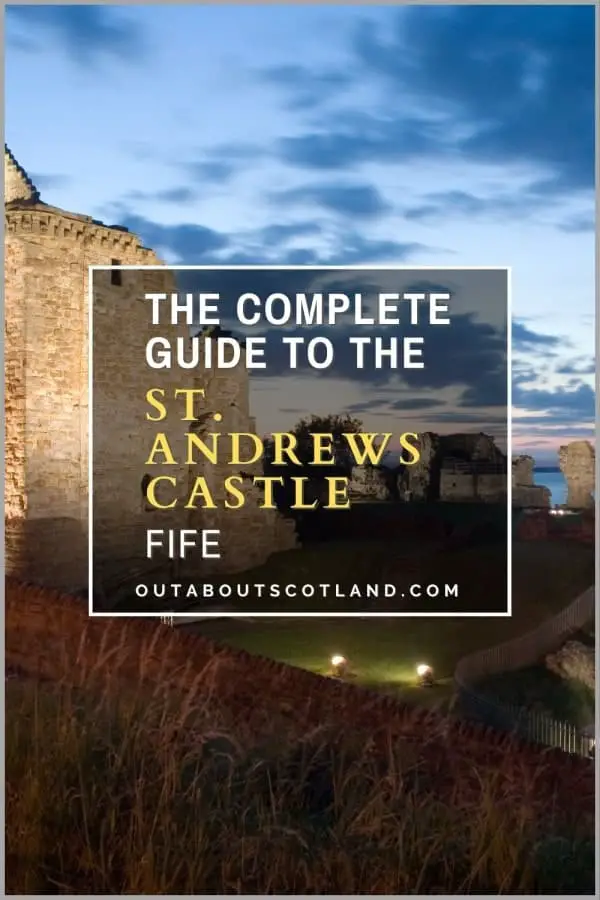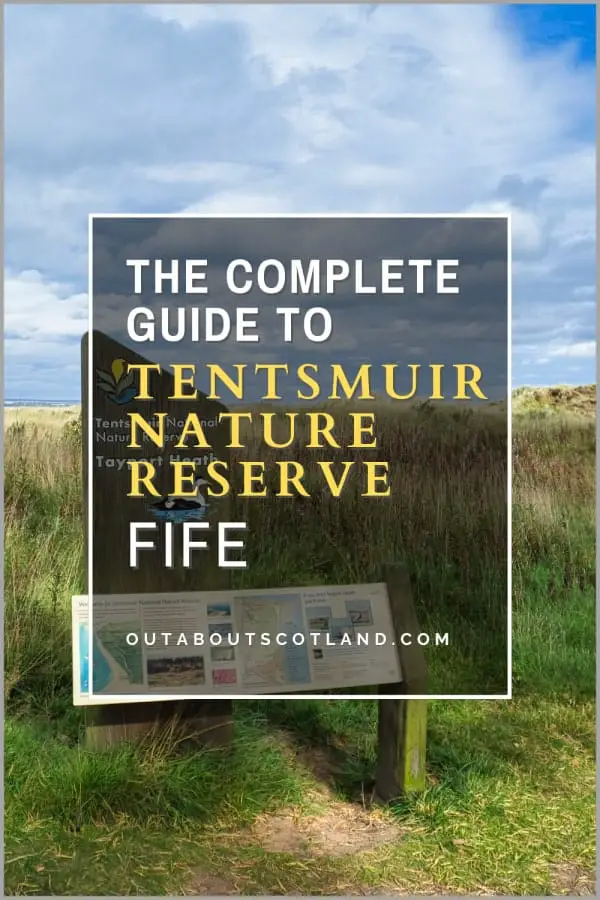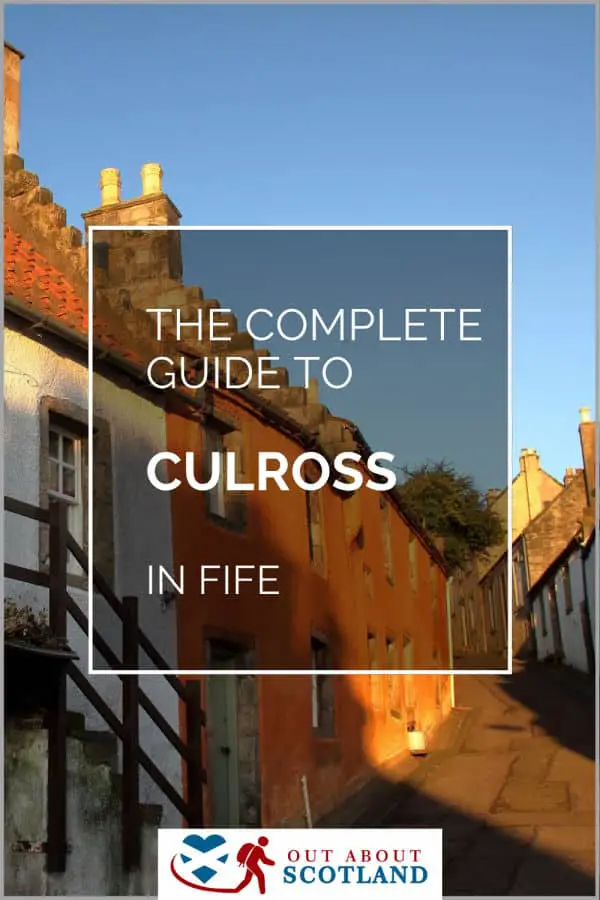Culross is a charming village in Fife that’s known for its well-preserved 17th and 18th-century buildings and cobbled streets, which offer a glimpse into what Scottish life was like during that period. Culross offers visitors picturesque walks through streets that have remained unaltered for over 200 years, in addition to a tour through history in the ruins of Culross Abbey and the restored Culross Palace.
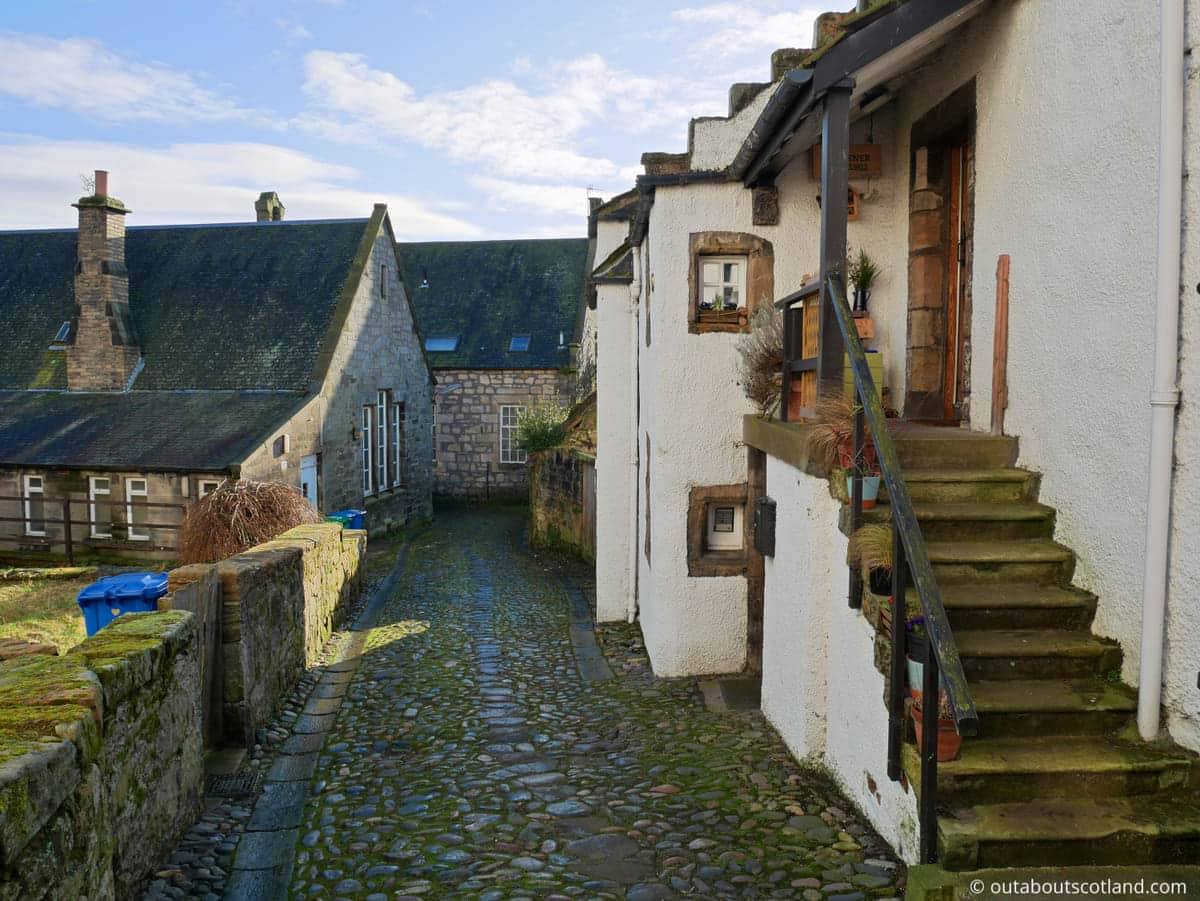
| Address: | Dunfermline, Fife, KY12 8JG |
| Opening Hours: | Culross is open 24/7, 365 days a year. |
| Admission Price: | There is no charge to visit Culross village. Culross Palace entry prices: Adult £10.50 Family £24.50 One adult family £18.00 Concession £7.50 |
| Parking: | There are two free car parks in Culross - Culross West (postcode KY12 8JG) and Culross East (postcode KY12 8HQ). |
| Contact: | NA |
| Facilities: | There are toilets at Bessies cafe near Culross Palace, gift shops, and the Red Lion pub. |
| Photos: | Virtual Tour YouTube Video |
Overview
The historic village of Culross is situated on the banks of the Firth of Forth where it overlooks the Forth Road Bridge, the petrochemical works of Grangemouth, and the Longannet power station. It’s not exactly what you’d call inspiring coastal views, so it’s perhaps surprising that this sleepy village is one of the most picturesque places in Scotland.
Culross has a rich history, having been founded in the 6th century and enjoying a great deal of wealth from the 16th to the 18th centuries thanks to two exports that were readily mined there: sea salt and coal. The export of these resources brought in a large amount of money to Culross, which is why so many of the buildings are so impressive, notably the 16th-century ‘palace’ that dominates the centre of it.
Visiting Culross is a bit like stepping into a time machine, and it’s easy to see why so many TV shows and movies have been filmed there. Most recently, Outlander used it extensively during season 1, where it set the stage as Cranesmuir, and the movie ‘Captain America’ used Culross to portray a small Norwegian town.
The reason why the village appears to be stuck in time is that for the last 90 years, the National Trust for Scotland has painstakingly restored the old buildings, cobbled streets, and defensive walls back to their former glory, and it’s now one of Scotland’s best-preserved villages.
You can discover this time capsule for yourself if you head towards Dunfermline and follow the brown tourist information signs that dot the A985. Culross is only 10 miles from Dunfermline, which is a 20-minute drive, so it’s an ideal place to visit after exploring Dunfermline Abbey or the attractive coastline near Charlestown.
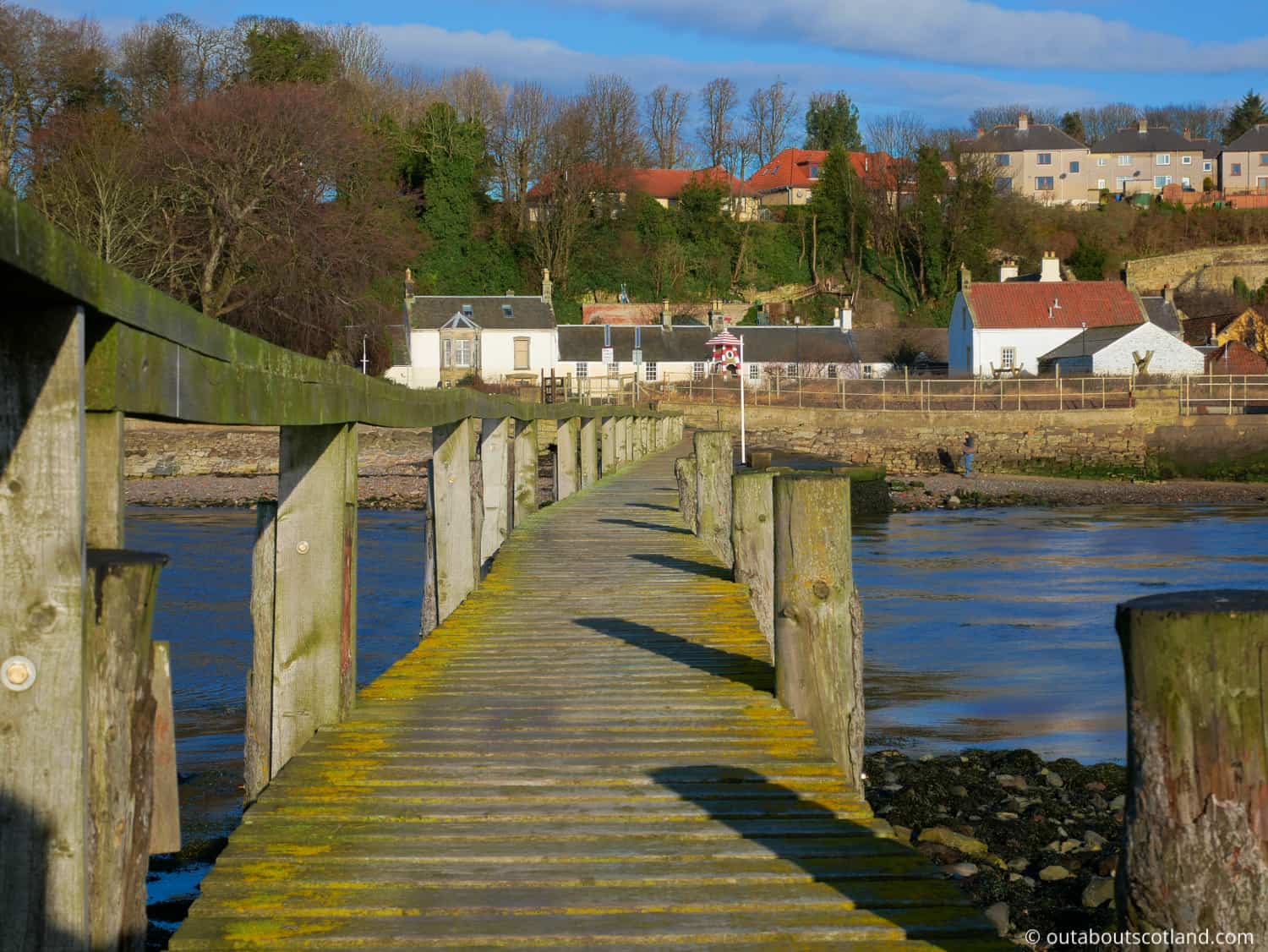
The Highlights
1: Culross is one of the last remaining still-intact 17th-century Scottish villages. There are very few places like this left in Scotland, so a trip to Culross is a unique experience.
2: There’s so much history to discover in the village, especially in the palace. Note that entry to Culross Palace is free for NTS members. Click here to join.
3: Culross is just a short drive from Dunfermline which means you can easily include a visit to Dunfermline Abbey after wandering around the village.
Visiting Tips
1: While Culross itself is a small village that can be explored in a day, it’s worth considering what else is nearby. The Fife Coastal Path, for instance, offers stunning walks along the shore.
2: If you have the time, take a walk northwest on a farm track to the old West Kirk, as it’s a nice walk that offers a look at the surrounding countryside. Alternatively, heading east will take you past Culross Beach and the Preston Island Salt Pans, which is an enjoyable 3.5-mile coastal trail.
3: Culross Palace, the Study, and the Town House are some of the key historical attractions managed by the National Trust for Scotland. Before you go, check the opening times for these sites, as they can be closed on certain days. Be aware that the palace is closed in the winter (1st November to 31st March).
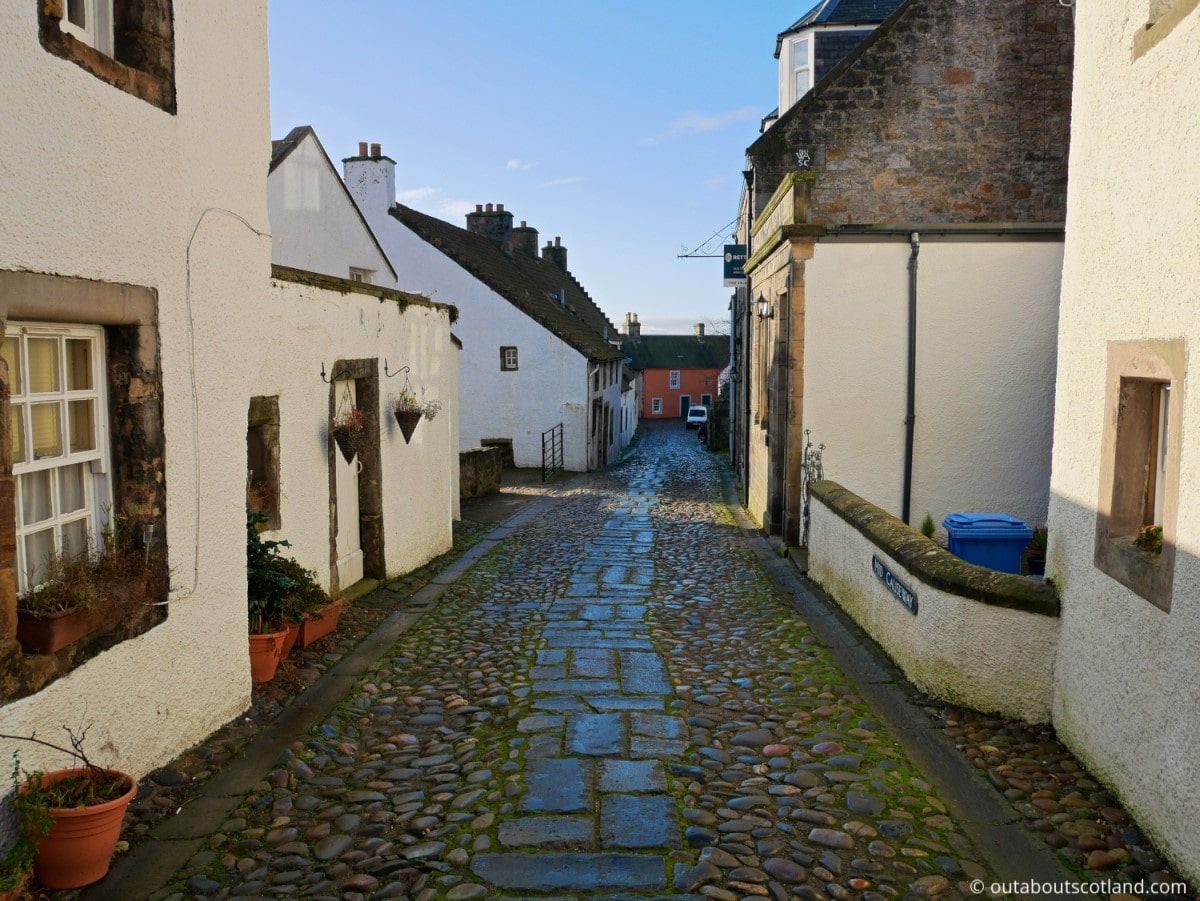
Tourist Information
Once at Culross, you’ll find a large car park facing the Firth of Forth, which looks out across a railway line (no longer serviced by a train station), where you can see the remains of the original pier that once served as Culross’s main harbour.
It’s worth crossing the rail track to take a look at the pier, as you can still see the remains of the 400-year-old stonework at the far end, although it was partially destroyed to repair the port at Leith in the 17th century. Thankfully, a series of repairs are now underway, and it’s hoped to completely restore the structure in the coming years.
From the pier, you can head towards the village square and two of the highlights of Culross: the ochre-coloured Culross Palace and the Town House. The ‘palace’ is actually the former dwelling of Sir George Bruce, who owned the once-prosperous coal mines and salt pans of Culross. Even though it isn’t a royal residence, James VI used it in the early 1600s, so it does at least have some royal connections.
While it’s an interesting building on the inside, the majority of visitors come to see the exterior. The NTS has done a great job of restoring the 17th-century gardens, and in summer, the smells of herbs and fruit trees are a real assault on the senses. After exploring the gardens, you can pop around the side of the palace into Bessie’s Tea Room. The tearoom offers a welcome rest with a fine selection of homecooked food and hot drinks, and the prices are reasonable.
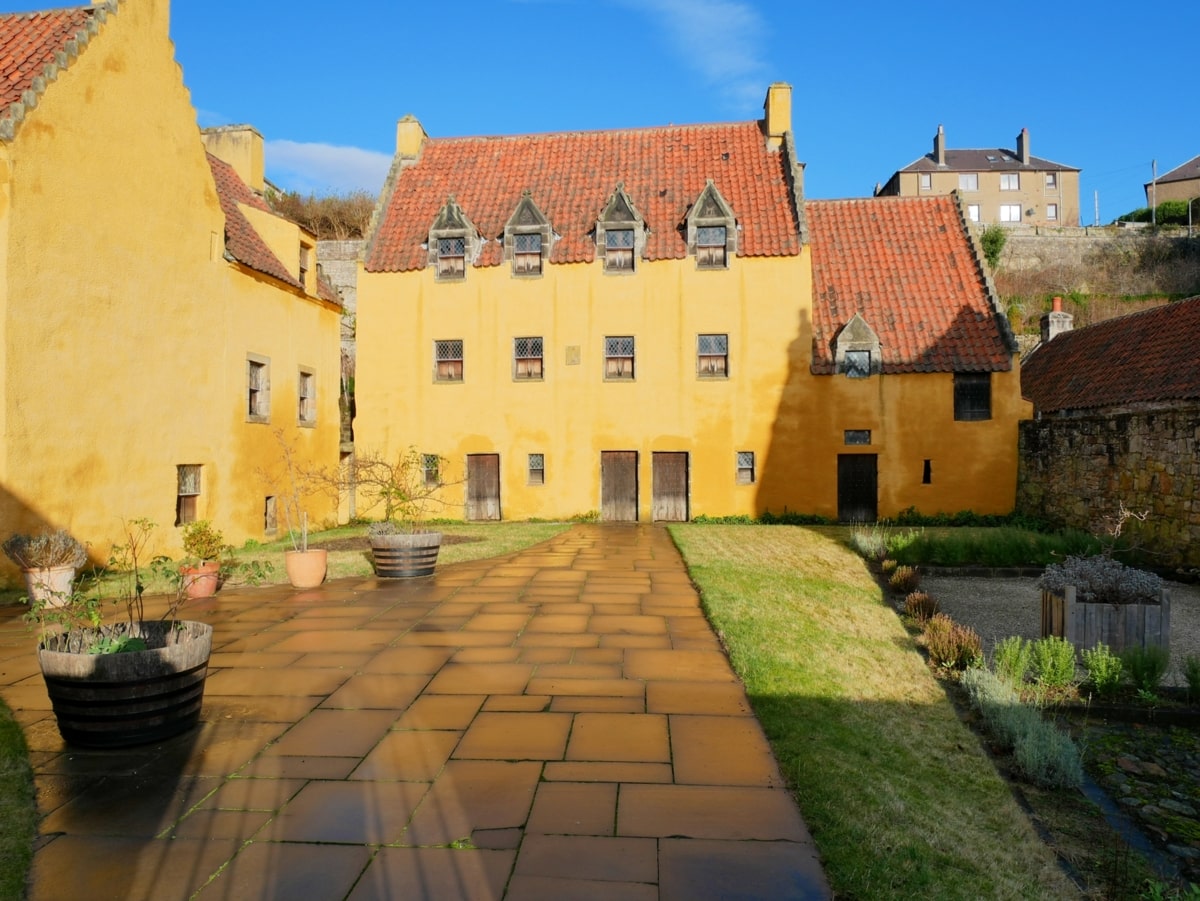
Next in a tour of Culross comes the Town House, which was built in 1626 and expanded in 1873 with an enormous clock tower. It’s a very grand building, and while not quite as statuesque as the palace, it’s just as interesting, with a small museum, an art gallery, and a local-crafts gift shop inside.
In addition to being the former home of the Bishop of Dunblane, the Town House was also used as a prison for condemned witches prior to their execution, who were locked away in a room in the attic. As interesting as it would be to explore the attic, it’s sadly not possible, as much of the building is off-limits to tourists.
From the Town House, you’ll follow steep, cobbled streets lined with white-harled houses that lead to the village’s Mercat Cross, a stone monument that was used for trading cattle and other goods in the 16th to 18th centuries.
The cross is located in a picturesque village square with tall townhouses and low cottages that have distinctive red slate roofs. Once you’ve explored the square, you’ll find the final highlight of a visit to Culross – Culross Abbey – up the narrow street of Tanhouse Brae, which leads away from the coastline towards the highest point of the village. The abbey is believed to have been founded in the early 1200s and it’s divided into two distinct sections, with mediaeval ruins on one side and a newer kirk directly behind it.
There’s not much of the old abbey that’s still standing, but it does have a lookout platform that offers good views across the Firth of Forth, while the pillars of a ruined cloister can be found in the grounds just around the corner. The newer section has more to look at with a collection of beautiful stained-glass windows, stone carvings, and a chapel.

Things to Do
Culross Palace: A 16th-century merchant’s house, Culross Palace is a beautifully preserved building with a stunning ochre exterior. It contains period furniture and features a beautiful garden.
Culross Abbey: Founded in 1217, Culross Abbey is a stunning example of medieval architecture. Although much of it is in ruins, the parts that remain are a testament to its former grandeur.
The Study: A white-harled house dating from 1610 with panoramic views over the village and the Firth of Forth. It’s one of the most photographed houses in Scotland.
Mercat Cross: Located in the centre of the village, the Mercat Cross is an iconic symbol of Culross’ historical status as a royal burgh.
Culross Town House: Once the centre of local government, the Culross Town House is a historic building with a unique clock tower. It now serves as a local history museum.
Culross Pottery and Gallery: This local pottery offers beautiful, hand-crafted pieces. The gallery displays work by various artists and is a great place to pick up a unique souvenir.
Coastal Walks: The Fife Coastal Path runs through Culross, offering stunning views of the Firth of Forth and the opportunity to spot local wildlife.
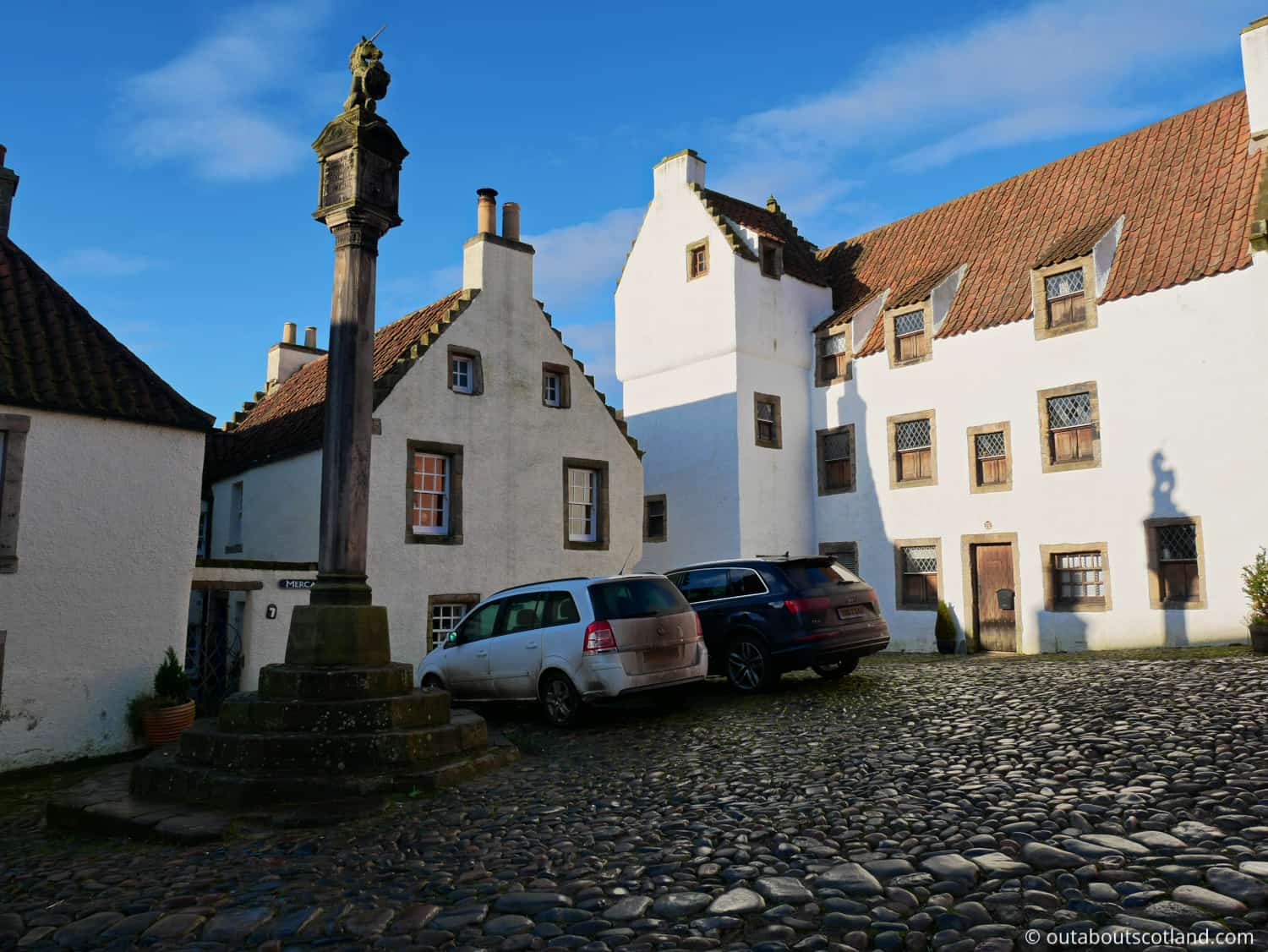
Things to Do Nearby
Dunfermline Abbey. St. Margaret’s Street, Dunfermline, KY12 7PE. 18-minute drive.
Many of Scotland’s great monarchs were laid to rest at Dunfermline Abbey, which is now managed by Historic Environment Scotland. The abbey and surrounding grounds are open to the public and are located close to the eateries on Dunfermline High Street.
Culross Abbey. Kirk St, Culross, Dunfermline KY12 8JF. 8-minute walk.
The abbey was built in the 1200s for Cistercian monks but it later joined the parish church in 1560, after which it fell into partial ruin. It is open for public viewing and entry is free.
Tuilyies Standing Stones. A985, Dunfermline KY12 8HD. 7-minute drive.
Ancient standing stones with peculiar vertical grooves, the purpose of which is still unknown. Located in Tuilyies Park which is a large recreational public park near the A985.
Valleyfield Woodland Park. Dunfermline KY12 8ER. 8-minute drive.
Woodland with nature trails and lots of paths, some of which follow the Bluther Burn, others that join footpaths through open fields.
Devilla Forest Trail. A985, Alloa FK10 4AS. 6-minute drive.
A highly-rated forest trail that cuts through Scots Pine trees that are a stronghold for red squirrels. The forest opens up to the north where you will find the Peppermill Dam.
Frequently Asked Questions
What is Culross famous for?
Culross is famous for its historic buildings and village square which have remained almost entirely unaltered since the village’s heyday in the 1700s.
The most famous building is the ochre-coloured Culross Palace which was built by the wealthy coal merchant George Bruce.
What was filmed in Culross?
Culross played a major role in the TV series Outlander where it set the scene for the fictional village of Cranesmuir.
Culross was also a film set for some of the scenes in the 2011 movie Captain America.
Why is Culross a Royal Burgh?
Culross was the centre of one of the most important and wealthy coal mining areas in Scotland throughout the 16th century.
Due to its success and the amount of taxes brought in by its mining industry, the village was given the title of ‘royal burgh’ by James VI.
What visitor facilities are there at Culross?
Culross village has a café serving hot food and drink, a car park, gift shops, and a pub.
What part of Outlander was filmed in Culross?
Culross, a village in Fife, was used as a filming location for the TV show Outlander. The village was used to depict the fictional town of Cranesmuir in the series.

